Milo Moiré strolls the Plaz at Basel
……………………………………………………………………………………………………………………………………………………………………………………………………………………………………
The body outside its shell: Milo Moiré
by Jean-Paul Gavard-Perret
Milo Moiré demands total freedom for her art. This can take different forms, because every creator has his/her own reconstruction of reality. As the Swiss artist (of Slovak and Iberian heritage) cultivates the embodiment of nudity, it is at the same moment to remove the constraints of morality, and simultanously create feelings and reflections. For Art Basel in 2014 the artist proposed a non-profit performance. She moved completely bare on the streetcars of Basel, and the Mass Platz crossroads central of the fair, allowing her body to find its primitive nature and the way it communicates. Her objective with the performance was to confront an art world dominated by money, and to generate dialogue.
The reactions were quite different: some people noticed nothing (or pretended to see nothing); others took out their mobile phones to photograph the iconoclast. Some were briefly amused, while others refused to look or see. On the Mass Platz, journalists and guests clustered around the artist and her companion, Paul Palm, who photographed the event. Milo continues to consider nudity “as neutrality, as waving a white cloth with the possibility of getting closer to someone else. Nudity provides one an occasion to feel vulnerable, and to discover its force.” Since her first performance, she makes a show with her body, sometimes featuring her vagina, because “the images born in her spirit, only the body can translate them.”
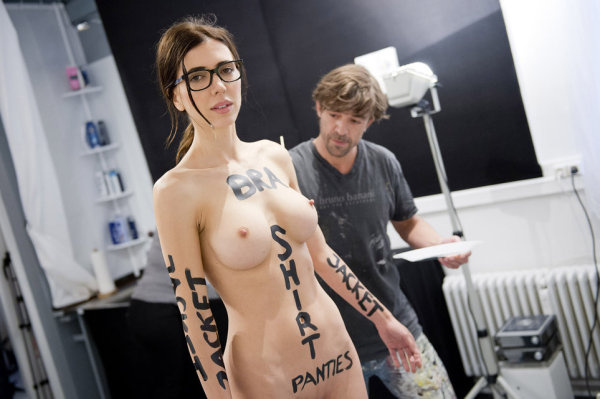
Milo Moire, In Performance
The artist remains fascinated by Gerard Richter’s intensely physical works, Käthe Hollwitz, Déborah De Robertis, Maria Lassnig, Joseph Beuys, Francis Bacon and H.R. Giger, and naturally Marina Abramovic. Milo Moiré was always fascinated by the courage of the “performeuse” and the artistic and revolutionary power of her body. As such, she prepares her public “exhibitions” very upstream and with the biggest care to limit the precarious situations: “with determination acquired, there should be no limit in art. Death is the only limit which I accept,” the artist declares. In Basel, her performance, “The Script System,” made her leave the Fair, saying that her presence was inequitable for the exhibitors who paid for their stands.
his reminded us of Paris, where Steven Cohen was pursued and condemned for sexual exhibition in Trocadéro, and where ” plug anal” of Mac Carthy was destroyed and then removed by the artist. All this is proof that sex remains alive in the center of the social and artistic debate, where controversy and opposition remain strong. There is always a too-low horizon. Or too high.
Latifa Echakhch’s artefacts
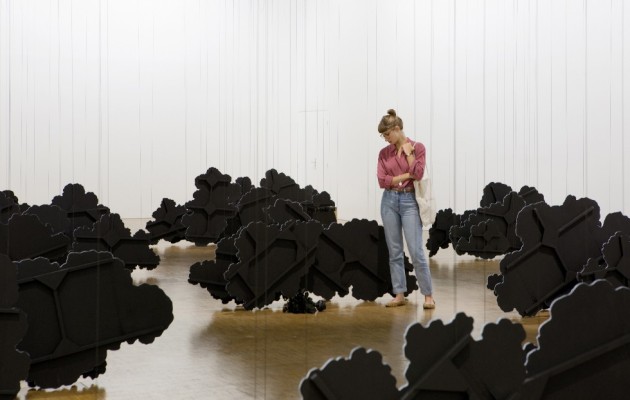
Latifa Echakhch : Galerie Eva Pressenhuber, Zurich Galerie Kammel Nemmour, Paris, Centre Pompidou (Espace 315) du 8 octobre 2014 au 5 janvier 2015)
With a very small number of pieces all extremely dense Latifa Echakhch’ installation speaks to the architecture of Centre Pompidou. Some of her reminiscences reference both the chador and antique drapery, setting the tone for the powerful symbolism of her sculpture and installations with sources deep in the collective unconscious, whether political, historical or psychoanalytical. The artist reactives older pieces to evoke the violence and authority of principal. She also experiments with open-ended site-specific propositions.
Latifa Echakhch emphasizes discontinuity over linearity and, above all, seems to take on more prosaic language. Sometimes is
shot through with evocations of myth and antiquity, sometimes is shown in its banal, everyday reality, but without deviations or harshness. Usually the opus impresses by its minimalist rigor : for instance a frize of compact mass of sand runs along the wall. All in the experience of the artist is simply complicated. Overabundance shows the indeniable quality of all the pieces. In sum, her variations on wall, sand, modules represent endpoints primitive or sophisticated between which a history of images could be written.
About the reviewer: Jean-Paul Gavard-Perrett writes about music and the visual arts. Born in 1947 in Chambery (France), he was a professor of communication at the Université de Savoie. He has published several essays, mainly about Samuel Beckett and painting, and short fiction, most recently “Labyrinthes,” Editions Marie Delarbre.
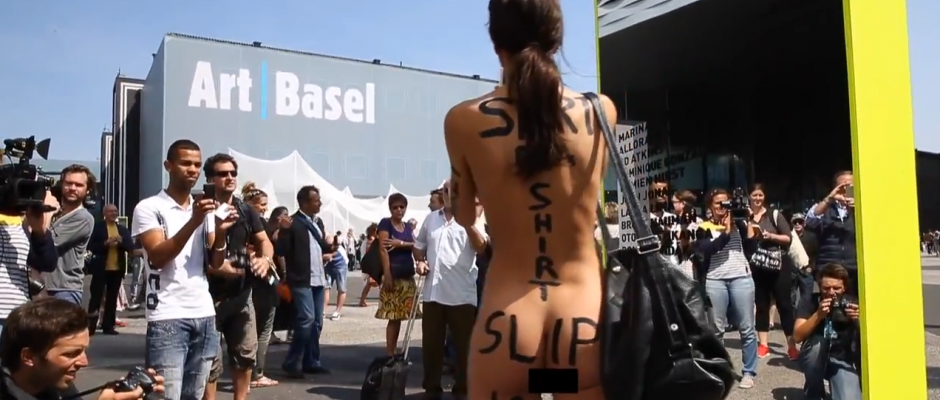
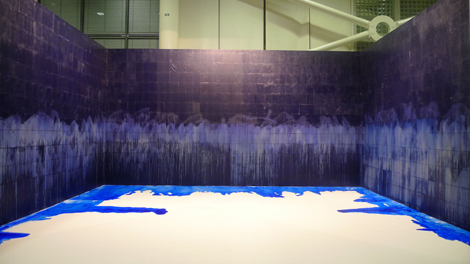
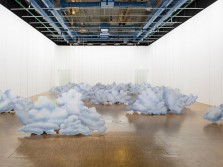
Recent Comments